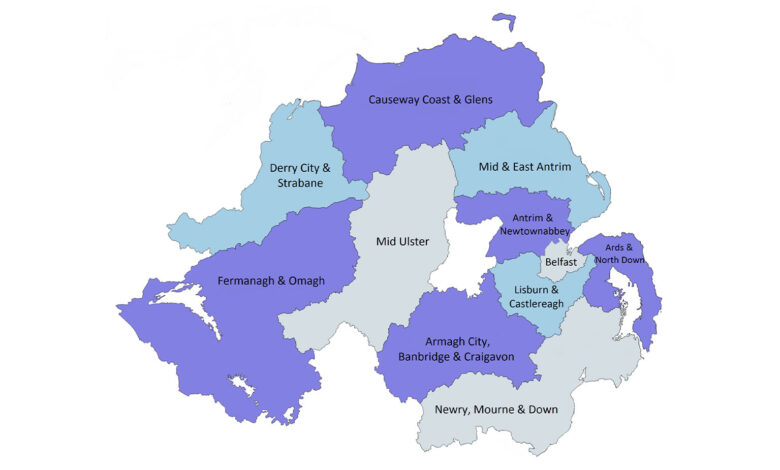Minister confirms Executive decision pending on long-delayed Local Government Boundaries Review

Three years after the Local Government Boundaries Commissioner submitted her final recommendations report, the Department for Communities has yet to publish it. Speaking to agendaNi, Minister for Communities Gordon Lyons MLA has confirmed that the report is still under consideration and will require Executive approval before any changes can be implemented.
When asked for an update on the publication of the final report, Minister Lyons told agendaNi in late March 2025: “That [the Local Government Boundary Review Recommendations] is being considered and it will require Executive approval for some of the changes that are being talked about. I expect that to be with the Executive very soon.”
However, no definitive timeline was provided on when the report will be made public or when legislative action will be taken.
The review process, completed in 2022, was intended to update and refine local government boundaries in Northern Ireland, ensuring they reflect population changes and community needs.
The Commissioner’s recommendations were submitted to the Department for Communities, whose role is to lay the final report before the Northern Ireland Assembly, “with or without modifications”.
Electoral consequences
The delay in implementing the review has already had electoral consequences. As a result of the time lag between the report’s submission and the last local government elections in May 2023, the Department confirmed that it would not enact any changes before that election.
As a result, council elections proceeded based on outdated ward boundaries, despite the Commissioner’s recommendations being available. This was by design, but remains a significant challenge given the continued delay in enacting the changes.
Meanwhile, new boundaries have been introduced for Northern Ireland’s parliamentary constituencies, and these were utilised in the Westminster election in July 2024. They will also be in effect for the next Northern Ireland Assembly election, which must take place by 2027. The next local elections are also scheduled for 2027 meaning time is running out to implement the recommended local government boundary changes before another election cycle begins.
Key proposals
One of the central themes of the review is the balance between electoral parity and community identity. A major point of contention has been the boundary between Belfast City and its neighbouring Lisburn and Castlereagh Districts.
Belfast City Council argued for an adjustment to align boundaries with clear geographic markers, such as the A55 outer ring road. However, the Commissioner ultimately determined that the existing boundary should remain, citing the importance of stability and minimal disruption.
Additionally, the review examined the structure of electoral wards within districts. The final report proposes adjustments in some areas to account for population growth and ensure that each councillor represents a roughly equal number of electors.
However, the review also recognises the limits imposed by legislation, which prioritises numerical balance over social and historical ties. Many respondents voiced concerns that rigid adherence to electoral balancing could disrupt well-established community links
During the consultation phase, 15 formal submissions were received in response to the revised recommendations. These submissions largely focused on localised concerns regarding specific boundaries. Some councils and community groups argued for modifications that would better reflect natural communities, rather than purely numerical calculations.
For example, the challenge of determining the boundary between Mid and East Antrim and Causeway Coast and Glens was raised. Some residents expressed dissatisfaction with the current division, arguing that it does not accurately reflect local affiliations. However, the Commissioner ultimately decided against making changes, citing a lack of compelling evidence for a realignment.
Another area of debate was the configuration of Belfast’s 60 wards. The review confirmed that Belfast’s wards could be adjusted internally without redrawing the broader district boundary.
This means that adjustments can be made to balance population numbers between overpopulated and underpopulated wards within the city without affecting neighbouring councils such as Ards and North Down.
Next steps
The Minister’s comments that the final review is to come “very soon” leaves little by the way of confirmation as to when the boundary review will be published and whether it will be there in time for the next local election.
Given the significantly higher level of nuance in distinguishing between boundaries at DEA level, there will need to be an advanced level of notice for administrative purposes, otherwise the 2027 local elections will take place with outdated boundaries and the current review recommendations will time out before the next boundary review is due in the early 2030s.





